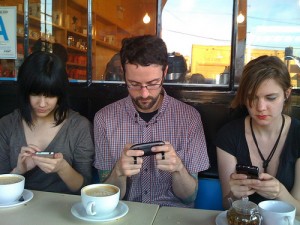From the uprising and liberation of countries in the Middle East to the heart wrenching earthquake / tsunami and nuclear disaster in Japan, the role of social media and mobile technology has become inextricably woven into our daily lives. The tipping point came in mid-2007 when social media really started to take off while at the same time smart phones exploded onto the scene. For marketers, tapping into this new “engaged audience†has been a windfall for some while problematic and baffling for others.
The key is to step back from traditional marketing principles by being helpful, genuine and offering a worthy experience while allowing the consumer to generate the buzz.
Social media’s appeal has stemmed from the fact that it is user-generated content that can be both personal and broad based. When social media was embraced by huge numbers of online individuals and communities it occurred so fast that even today many businesses are still trying to figure out what to do. Those businesses that recognized the true potential of social media quickly understood that by offering worthy content, valuable insight and being accommodating have resulted in creating loyal customer communities.
As we now know, the success of social media platforms such as Facebook and Twitter have fulfilled a need for meaningful connections. And it’s no accident that the popularity of the smart phone and its numerous apps have accelerated this change. People are now connected 24/7 and can do everything from choosing where to eat, to buying books, insurance and music, to playing Angry Birds and just about everything else. It has been an evolutionary process where the best ideas, services, apps and businesses have survived and flourished while those that haven’t measured up have been discarded and largely forgotten.
Users have All the Power
For businesses still trying to figure out how to navigate and succeed in this environment they must accept the fact that first and foremost social media is a ground up medium. Users have all the power.
As Jamie Monberg stated in Fast Company, “today’s consumers are stingier with their brand loyalty than in the past because they can afford to be: they are burdened only by an abundance of choice and knowledge.” To enter this arena wisely is to provide a genuine experience and/or credible content that users will embrace and gladly promote. Being overtly commercial is a sure path to being discredited.
Monberg makes this point exactly. “Today, any brand has a potential army of credible, unpaid spokespeople that are willing to work on its behalf. And this army is the exact same group of people who are willing to work against it.â€
You Can’t Fake It!
Those companies that view social media sites simply as platforms to advertise their wares just don’t get it. “You can’t fake itâ€, says Doug Mack, CEO of One Kings Lane, the market for “online commerce is efficient and will either reward or discard the product or service based on how helpful and genuine the company is.”
It’s about WHY
As crass as the comparison may seem, just as the organizers of the Egyptian uprising used social media as a tool to help facilitate the protests, so too should the reasons why marketers need to understand that what they offer will be evaluated on whether it is helpful or not.
As marketing consultant Simon Sinek puts it, “people don’t buy what you do, they buy why you do it. And what you do proves what you believe.†Sinek best describes the purpose and cause of why businesses do what they do in his video.
Jamie Monberg further mentions that “we need to stop buying and selling ideas about brands that don’t have any substance behind them and start enabling people to discover why they should incorporate a company’s brand into their own.†He uses Red Bull as an example of a company that actually delivers the experience rather than “using the old guard type of branding and messaging principles.†My agency group, Science Creative , also made this point in one of our previous posts about Red Bull being a great example of a company that leads the way in delivering authentic content.
Credibility Counts
It’s important for businesses to understand and appreciate that social media is not at all like traditional media where only one-way communication takes place. It’s the people’s platform where their collective actions decide what is valuable and useful what should be ignored. Social media combined with smart phones and mobility are what now connect and make up the social graph for most peoples daily lives. And just as this technology is providing the instant means for organizing uprisings in the Middle East or the ability to connect with loved ones (or give donations) during the disasters in New Zealand and Japan, it can also be the instant means for connecting with a brand. Social media, from day one, has always been a users system and that collective consensus will either approve or disapprove what marketers have to offer – therefore it’s imperative not to talk at the users but to converse with them.



